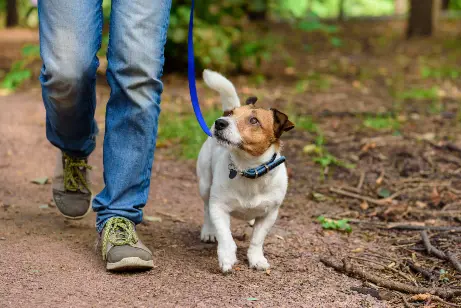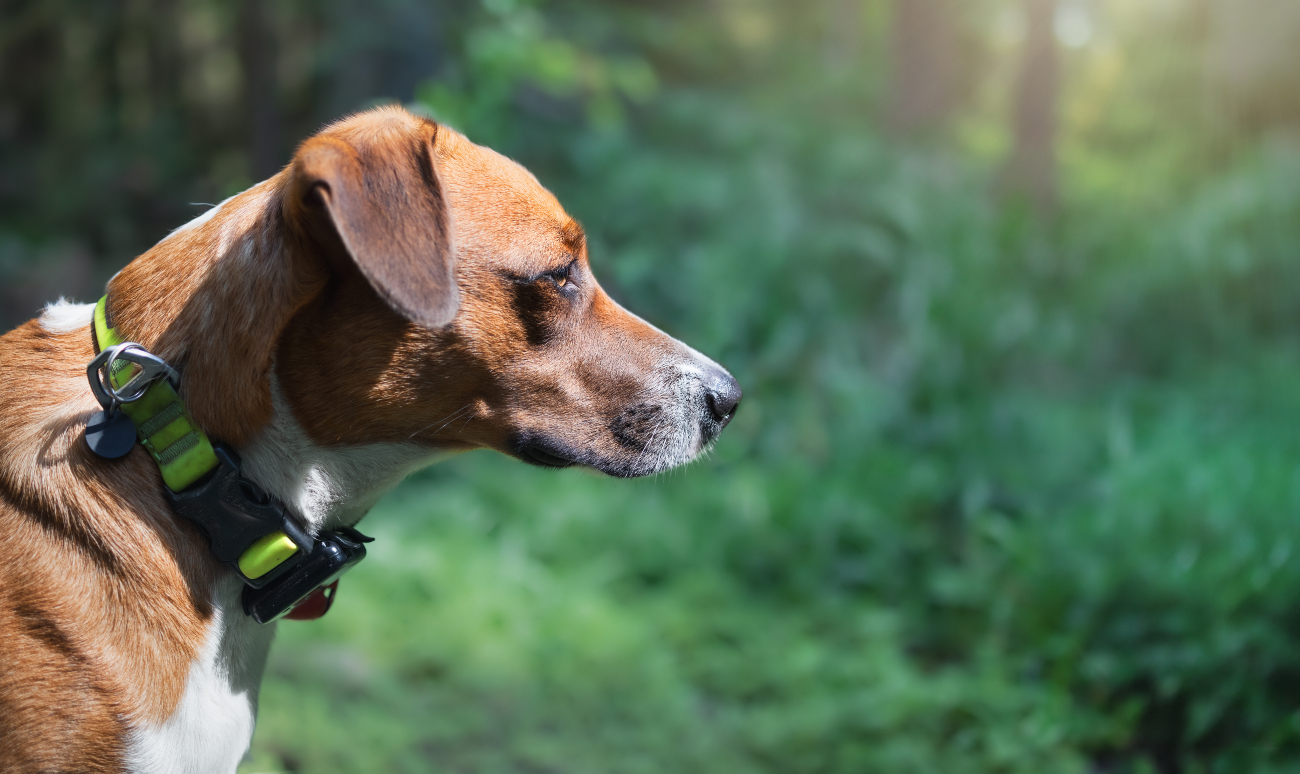How to tell if your dog is anxious on walks
8th December, 2023

Walking your dog should be a joyous experience - a chance to bond, explore, and burn off some energy. But for some pet parents, the simple act of walking their furry friend can turn into a stressful ordeal. If you've been wondering, "why is my dog so anxious on walks?" you're not alone.
The good news is that there are ways to help your canine companion feel more comfortable and confident during walks. This guide will delve into the signs of dog walking anxiety, the reasons behind it, and practical tips to ease your dog's nerves.
Understanding dog anxiety
Anxiety in dogs is not uncommon. It's an emotional response typically associated with feelings of unease, such as worry or fear. It's important to remember that dogs, like humans, can experience anxiety due to various factors.
From unfamiliar environments to past traumatic experiences, these factors can trigger anxiety, leading to noticeable behavioural issues, especially during walks.
Recognising anxious behaviour: The telltale signs
One of the first steps in understanding how to tell if your dog is anxious on walks is learning to read your dog's body language. Dogs communicate their feelings primarily through physical cues.
Here are some common signs that might indicate your dog is feeling anxious during walks:
- Rapid or heavy panting: Dogs pant when they're hot, excited, or trying to cool down after physical exercise. However, if your dog is panting excessively during walks without any obvious reason, it might be a sign of anxiety.
- Dilated pupils: When a dog experiences stress or fear, their pupils can dilate, making their eyes look larger than usual.
- Unusual walking patterns: If your dog is walking erratically, zigzagging, or frequently stopping and starting, it could be due to anxiety.
- Freezing or refusal to move: An anxious dog might suddenly freeze in place or refuse to continue walking. In extreme cases, they might even try to lie down in the middle of the walk.
- Tense body language: Look for if the dog shows signs like a stiff posture, a tucked tail, flattened ears, or bracing of the back legs. These are all signals that your dog might be feeling anxious.
- Reactivity: Anxious dogs often react to triggers (such as other dogs, people, or objects) by barking, lunging, growling, or snarling.
- Refusal to take treats: If your usually food-motivated dog refuses to accept treats during a walk, it could be a sign they're feeling stressed or anxious.
The causes of dog walking anxiety
Understanding why your dog might be anxious during walks can help you address the issue more effectively. Often, the root cause of the anxiety can be traced back to certain triggers or underlying factors.
Here are some of the most common causes of dog walking anxiety:
- Lack of socialisation: Dogs who haven't been adequately socialised may feel anxious or scared when they encounter other dogs or humans during walks.
- Past trauma or negative experiences: Dogs with a history of abuse or neglect, or those who have had negative experiences during walks, can develop anxiety over time.
- Fear of specific triggers: Some dogs might be afraid of specific things they encounter on walks, such as loud noises, moving vehicles, or unfamiliar objects.
- General anxiety: Some dogs are prone to anxiety in general, and this can extend to their behaviour during walks.
How to help your anxious dog on walks
Understanding your dog's anxiety is the first step, but what can you do to help them feel more comfortable and confident on walks?
Here are some practical tips to help manage your dog's walking anxiety:
1. Refocus their attention
When your dog starts showing signs of anxiety, try to divert their attention to something else.
This could be a favourite toy, a command they know well, or a treat. The goal is to shift their focus away from the thing that's causing them anxiety.
2. Keep a regular routine
Dogs thrive on routine. Try to walk your dog at the same time and follow the same route each day. This can help reduce anxiety by providing a sense of predictability and familiarity.
3. Gradual exposure to triggers
If you know what triggers your dog's anxiety, you can help them become accustomed to it through gradual exposure.
Start by exposing your dog to the trigger at a distance or in a controlled environment, rewarding calm behaviour, and slowly reducing the distance over time.
4. Stay calm and positive
Your dog can pick up on your emotions. If you're feeling tense or anxious, your dog is likely to feel the same way. Try to remain calm and positive during walks, reassuring your dog with a calm voice and positive reinforcement.
5. Consult a professional
If your dog's anxiety is severe or doesn't improve with these strategies, it might be time to consult a professional. A certified dog behaviourist or trainer can provide personalised advice and training strategies to help ease dog anxiety.
6. Consider dog anxiety medication or supplements
In some cases, medication or supplements might be recommended to help manage your dog's anxiety. Always consult your vet before starting any new medication or supplement.
Is walking good for anxious dogs?
Regular walks can work wonders for anxious dogs who are prone to anxiety. Dogs, much like humans, need exercise to burn off excess energy and to maintain a healthy state of mind. When dogs don't get enough physical activity, their pent-up energy can translate into nervousness and anxiety.
More importantly, walking is a sensory-rich activity for our four-legged friends. The variety of sights, sounds, and smells they encounter during a walk stimulates their minds, diverting their attention from stressors that may cause anxiety.
Plus, the consistent routine of daily walks can provide structure and a sense of security to an anxious dog's life. So, if you have a fur baby who tends to be anxious, make it a point to incorporate regular walks into their daily routine.
Getting the right support for your anxious dog
Dealing with an anxious dog can be challenging, but remember - you're not alone. There are plenty of resources and support available to help you and your furry friend.
From online forums and support groups to a professional dog trainer and vets, don't hesitate to reach out for help if you need it.
And remember, if you're considering getting a dog insurance quote for your furry friend, you can get a quote through our website. If you would like to talk to one of our dog insurance team, you can get in touch with us on 0330 102 5748.
Conclusion

Walking your dog should be a fun and relaxing activity for both of you. If your dog is showing signs of anxiety during walks, it's important to address the issue as soon as possible. You may also want to learn more about dog walking as a whole for some more tips and you can do so on a blog elsewhere on our site.
By understanding the signs of anxiety, identifying potential triggers, and using strategies to help your dog feel more comfortable, you can transform walk time from a stressful ordeal into an enjoyable experience.
Remember, patience and consistency are key - with time, your dog can learn to view walks in a more positive light.
Helpful Pages
Recent Posts
Pet Insurance Quote
- 98% claims paid *
- Claims paid directly to vets
- 24/7 vet video consultations
- Interest free monthly payments




